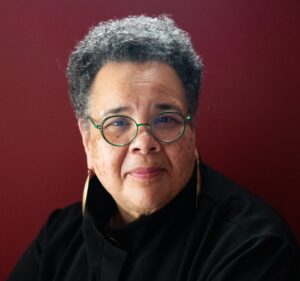
Teaching One-on-One
An audio version of this blog post may be found here.
It was the first morning of my vacation. The restaurant at the resort had a waiting list for breakfast patrons. The hostess took my phone number and said I would be called when a table opened. I thanked her and walked to find a comfortable spot in which to wait. Not far from the dining room, guests could choose to linger in any of three adjoining rooms--the bar, lobby, or library.
I chose to wait in the library. The room was ringed with mahogany shelves carefully adorned with books and creative objects. Statues, framed paintings, and board games were on display. The room reminded me of magazine covers from Architectural Digest or Good House Keeping. The many chairs and couches were positioned to invite guests to linger in small groups, or to simply sit and read. I picked a chair facing the wall of windows. The windows provided a view of the sprawling pasture setting. I noticed a scrabble board was set on a table near the windows and a chess game was set at another table near the entry door. I, indeed, felt as if I was visiting a friend or relative’s home.
As I waited, not because they were loud or intrusive, I overheard a grandfather teaching his grandson to play chess. The boy was about six or seven years old. With the grandfather seated on one side of the board and the boy, kneeling in the chair on the other side, the granddad invited the boy to make the first move. As they played, the grandfather patiently explained the way the boy might move varying pieces. Several times, he encouraged the boy to consider a strategy. At the end of the game, the grandfather showed the boy how to reset the board for the next people who might want to play. I overheard the grandfather say he had taught his daughter, the grandson’s mother, how to play chess when she was about the same age as the boy.
Even when I am on vacation, I am thinking about and identifying teaching moments. This tender teaching moment between grandfather and grandson was poignant, delicate, and beautiful. It was not extraordinary. Its beauty was in the ordinary occasion of a grandfather taking time, one-on-one, to play with his grandson.
Some of the best, most tender, teaching occurs one-on-one.
Classrooms can be marvelous arenas for superb teaching. Classrooms can be sites where the relationship between instructors and learners transforms. Equally ripe with possibility and beauty are the one-on-one relationships between faculty and students which happen beyond the classroom. Teaching students in one-on-one modes has the potential to assist students in ways that the classroom encounter cannot. The opportunity of a sustained conversation with one student can sometimes lead to a long-lasting, life-changing connection.
While I was on a faculty, with intention, as part of my teaching agenda, each year I chose to work with a student teaching assistant (TA) and a student research assistant (RA). I considered these relationships with students as key to my teaching responsibility as the courses I taught in classrooms.
My practice was to meet weekly with each of the two students to facilitate our prescribed tasks. Then, once a month, if the students were interested, I would convene them for a meal to discuss larger theological issues, hear how they were managing in the day-to-day reality of graduate school life, and encourage conversation about their occupational aspirations and dreams. My aim for these one-on-one relationships was to aid their health and success.
I honed my listening skills by teaching one-on-one. Spending time in one-on-one conversations allowed my primary focus to be on the questions, curiosities, abilities, and perspectives of the student. These one-on-one relationships allowed me to make stronger recommendations for further graduate study, employment options, or give my opinion about life’s unexpected twists and turns. A regular dimension of this kind of teaching was when I was able to write very considerate, in-depth, letters of recommendation for my students because I knew the student as a person and not just as a student who had done well in my class. Occasionally, if there was trouble, my relationship with the TA or RA allowed for convincing intervention or advocacy.
My practice of intentionally constructing ways of working one-on-one with students comes from my own experiences in graduate school. When I was in graduate school, the professors for whom I was their TA and RA became my career-long mentors and friends. The three-faculty people who I worked closest with in graduate school have been influential in guiding my entire academic career.
Recently, I referred one of my current mentees to my mentor for guidance on an issue for which he had expertise. I told my mentee that I was putting them in touch with their “grand-mentor.”
Through these connections I know I am a better teacher and colleague. Last week, a mentee who serves on a university faculty and just received tenure, called me and asked me to talk with one of their doctoral students. I was delighted to assist. Just like grandfather was so glad to teach grandson, I am overjoyed to reach out and support a student of my student.
Leave a Reply